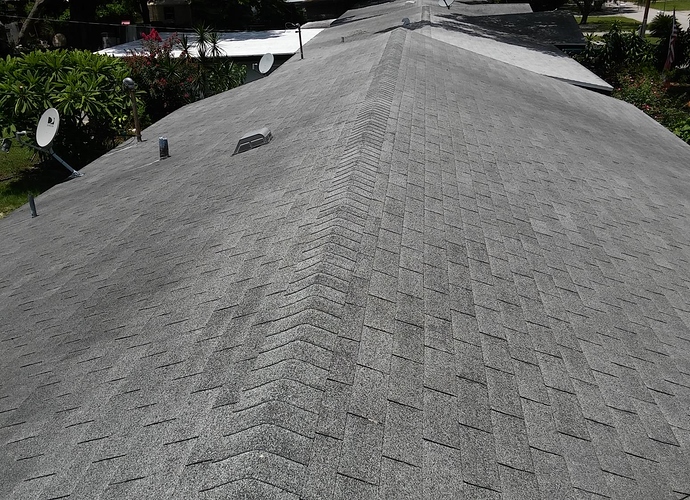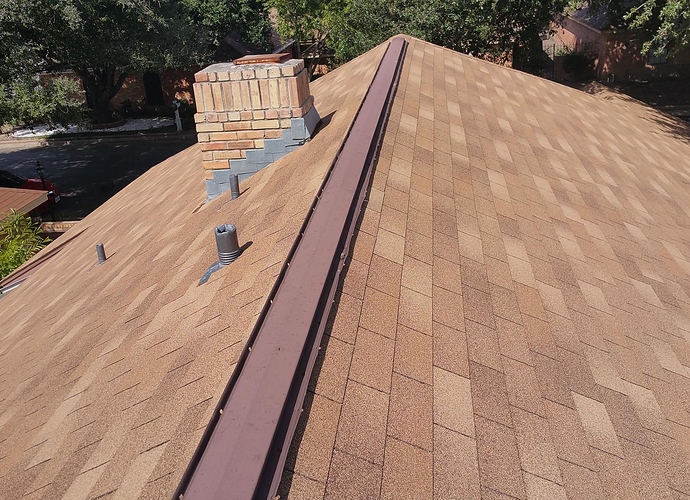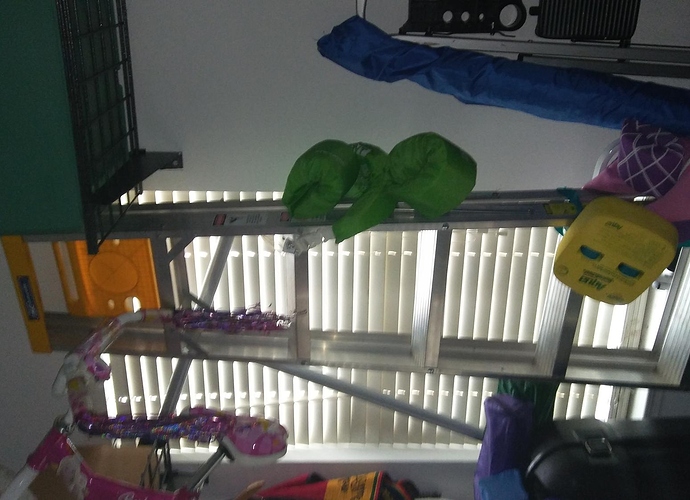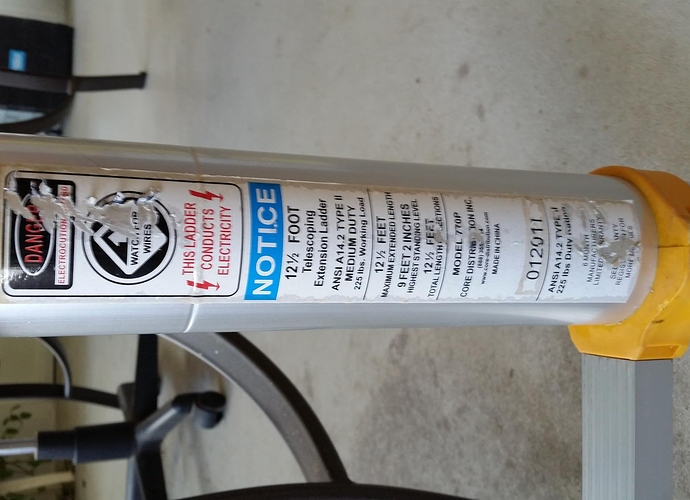This is my research on the article “15 tools every homeowner should own”.
I would generally agree with the list, but would emphasize it differently.
The first and most important is the Safety Glasses or Goggles. They should be used whenever using any tools or chemicals.
The second most useful item is a large roll of Duct Tape. This can be used in so many ways. The third most useful is the flashlight. Also possibly include a small headlamp type light, allowing use of both hands.
Many of the other tools can be replaced with one GOOD Multi-tool like a Leatherman or Gerber tool. The others may be useful, but some homeowners should not be entrusted with any tool more complex than a wooden lead pencil.
Another useful thing would be a book like You Tube for Dummies.
Just looking at this picture everything appears ok. Only 3 risers so no handrail is required for the steps. However the far side of the porch has more than a 30 inch drop (which must be measure 6 feet out) and would require a guard rail on that end.
Barbeque Safety
It was nice to learn that there can be no more than 2 20 lb tanks of a one or two family home. I always figured that electric was the safest and it is. There are a lot of safety regulations for both gas and charcoal. So study up. Great little course.
Ladder safety should be a priority to any home inspector. Choosing the right size and type are critical. Proper use of ladders also play a big role in ladder safety.
Being able to use a ladder is paramount to being able to access parts of the building structure no other way. Like everything else ladder safety is first and foremost to planning a job that requires an inspector to get access to a roof. Having the right type of ladder that is approved for the proper weight is the first step in the roof inspection process. The second is following all necessary steps as well as safety precaution for the proper use of the ladder.
Ladder Safety
by Nick Gromicko and Kenton Shepard
One statistic I find disturbing is that in the past decade there has been a threefold increase in the total number of ladder fall fatalities. Since the population has not increase three times in the same amount of time then either the reporting of accident and how they are caused has gotten better or we as a society have become more inept at using tool and equipment safely. Unfortunately people think that by watching something on TV or the internet that they understand how something works and the dangers involved, unfortunately learning from mistakes can have some pretty severe consequences. When you get a new tool it’s important to read all safety instructions that come with it
Ladder use starts with ladder safety. To be able to reach many of the areas I need to inspect, I rely on my ladders. If I don’t maintain ladders and use them properly, they can’t support me for what I need them to do.
https://www.nachi.org/ladder-safety.htm
Part of ladder safety is knowing and understanding the different types of ladders, their uses and how they can help an inspector do their job. Depending on the need, there are different types of ladders that can be useful. At times though, a ladder is not the best choice to finish a project. Sometimes keeping your feet on the ground and using binoculars, a pole camera or a drone may be the best option.
Today is ladder safety training day.
As a full time Captain with a municipal fire department, I work with ladders on a frequent basis. The ladder training class was a good review, however I disagree on one point in particular. The lesson indicated that it is acceptable to level a ladder with wooden boards. I wholeheartedly disagree with this statement. If you are forced to use a ladder on an uneven surface, you should dig down (carefully removing a plot of grass if needed to be placed back), and level your ladder with one leg in a hole. Placing your ladder on top of boards or other leveling items is inherently dangerous, and can cause your ladder to slip or shift. I’ve seen first hand the result of this, even with large 2x12s used a base plates.
Play it safe, and take your time. Ladders kill.
This was a great course! I learned a lot. The image is of a stepladder that will need to be inspected or probably replaced before use. We actually back into it in the garage on a regular basis. NOT GOOD. So we will be replacing that ladder and finding a better place to store the new one. Key points. #1 I never knew to rotate the bottom feet of an extension ladder to “dig into” the earth for a better, more stable foundation. That huge! I have always used the feet because I thought that was the right way. #2 the 4:1 rule Good to have a rue to lean by and it makes perfect sense. #3 The maximum working height of a ladder and 3-4 foot clearance above the roof for getting on and off the roof. #4 Tying off the ladder. This is another crucial point I have been neglecting that could save my life. Great stuff and I enjoyed the repetition driving the points home.
Doing the ladder safety today, good overall starter. These are small items we forget about to check but very important with our jobs. Safety should always be 1 in our profession!! I’ve used this ladder for quite sometime, always inspected and clean after each use, it still has the tags on it.
This is a picture of a type 1A stepladder with a load capacity of 300 pounds. This stepladder is for industrial use. The stepladder is properly labeled with a clean and easy to read sticker on the side. The steps are clean and good shape. The stepladder is ready for use
With 300 deaths caused by falls by ladders the United States are the world leaders in this category. Lets not forget the U.S. also have more than 164,000 emergency room-treated injuries. In the past decade ladder deaths have tripled. Most of these deaths are from falls under 10’ high. The leading cause of deaths on construction sites are from ladder falls.
People please clean and inspect your ladder frequently. Do not use a dirty or defective ladder.
Ladder safety is the utmost importance, therefore your ladder should always be inspected before every use. If you find a defective ladder, then tag it out and have it repaired or replaced. A damaged ladder is a very dangerous situation, and should never be used!
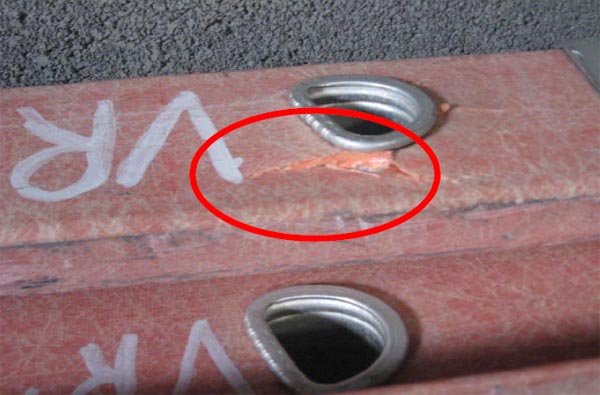


Ladder safety:
Ladders are an important tool for every home inspector, so it’s important to understand how to use them safely. They can be very dangerous, so knowing the proper use of a ladder and how to inspect them is of the utmost importance. The United States leads the world in injuries and deaths from ladder falls. So I would highly recommend taking this course and reading the article “Ladder Safty”.
Ladder Essay
The photograph shows a two-piece aluminum extension ladder. The steps on the ladder are in good condition and are fastened correctly to the side rails of the ladder. The steps are knurled for slip protection. The pulley system on the ladder is in good condition, however, the rope for the pulley system shows signs of wear and deterioration. The ladder should not be used until a new rope for the pulley system has been installed.
Telescoping ladders are extremely handy, lightweight, and useful for home inspectors. Extreme caution should be taken with this type of ladder due to pin system that is used to lock the leg sections into place. Routine inspections should be performed to insure that the telescoping ladder is clean and free from dirt, grease, and debris. The locking pin systems should be inspected for proper function. When using the telescoping ladder, verify each pin on each side of both rails to insure that they are locked into place before standing on the ladder and to prevent potential falls.
This is a pull-down attic access stairway. In the closed position, it appears to seal effectively, however, when opened, you can see that the available insulation is inadequate for the ceiling space.
The ladder is in good condition. All rungs are evenly and properly spaced and are solid. The hardware moves easily as it should, and sets the ladder in proper and solid position for use.

